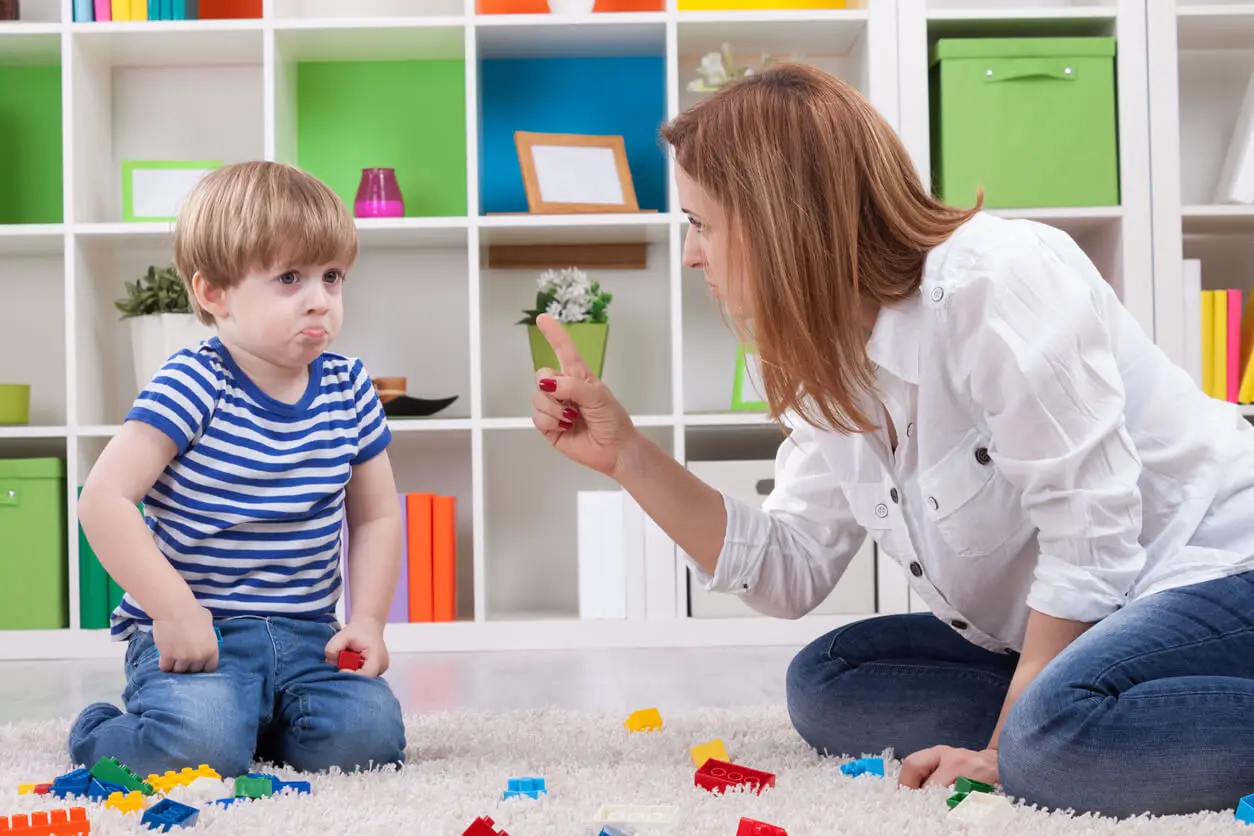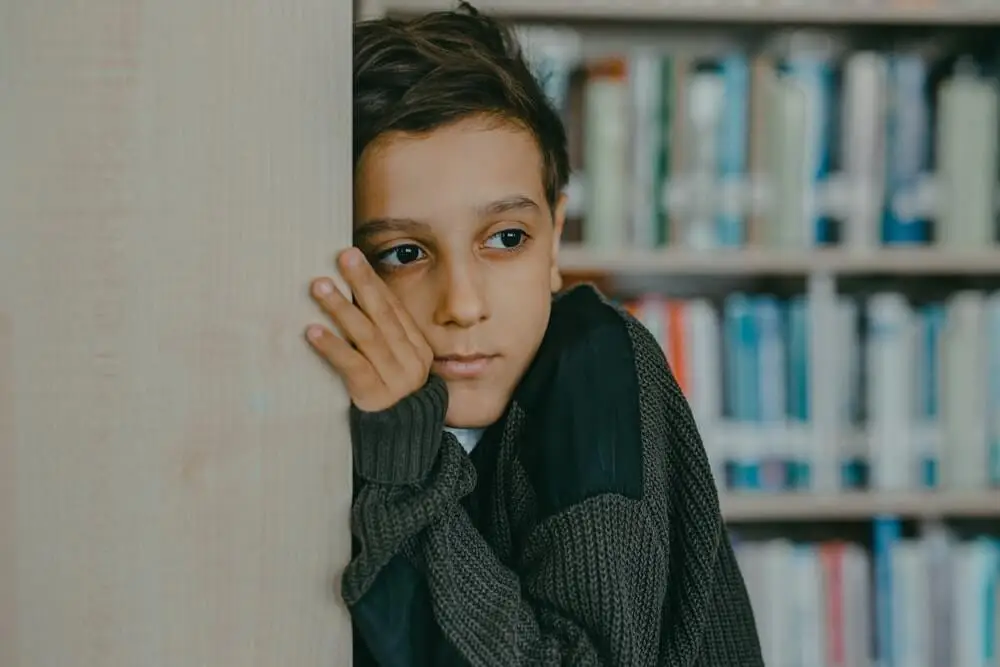The Thinking Chair: Is This Method Useful for Teaching Children?


Written and verified by the psychologist Maria Fatima Seppi Vinuales
For a long time, the so-called “thinking chair” was one of the most widely used parenting aids. But does this form of “punishment” really work?
There are voices for and voices against it. Everyone has their own experience. The truth is that not all children need the same thing.
This is very important to keep in mind. The effectiveness of certain techniques depends on their level of maturity, their age, their personality, when the method is applied, and a while host of other factors.
Why is the thinking chair not recommended for children?
The “thinking chair” is a technique that has been present in the lives of parents and educators for a long time. However, as more is known and learned about childhood and its development, the repertoire of recommended techniques is also expanding.
Today, the thinking chair is discouraged by many specialists.
This method is used when a child is believed to have behaved incorrectly. Therefore, the child is asked to go to the thinking chair alone and reflect on his or her behavior.
As its name suggests, the objective is to call for reflection on a behavior. However, we must not lose sight of the fact that thoughts in childhood and in adulthood are completely different.
To understand this better, let’s think about the progressive development of the brain. Only with time do we achieve mastery of different functions, such as executive functions, which help us to plan, organize, make decisions, and control impulses.
So, before telling children to go to the thinking chair, it’s worth asking ourselves what they’re actually going to think about. Are they going to think about what we want them to think about? It’s quite possible that they won’t. Many of them don’t even have the ability to do this yet.
Just sending them to the thinking chair doesn’t promote any kind of learning. It doesn’t point in the direction of the desired behavior.

The thinking chair is still a punishment
In addition, we have to be careful about the message we are installing. A father who tells his daughter, “I’m going to send you to the thinking corner” leads her to a misconception about what the act of thinking entails. In other words, it may lead to the opposite of what we expect!
The thinking chair or time-out is therefore also seen as punishment in disguise. Instead of promoting thinking, thinking chairs lead to the four consequences of punishment:
- Rebelliousness
- Retribution
- Withdrawal
- Resentment
It’s also perceived as punishment because the message to the child is that we’re withdrawing our affection from them. In reality, what we should convey is that their actions have consequences and that one of them may be parental anger or discomfort. However, it’s important to highlight that this doesn’t mean that we don’t love them anymore.
On the contrary, in order not to damage their self-esteem, we must also be able to communicate that we love them both when they do things right and when this does not happen. We should encourage them to correct their behavior.
We think you may also enjoy reading this article: Shyness in Children: 6 Tips to Help Them Overcome It
Some alternatives to the thinking chair
Instead of proposing the thinking corner or the thinking chair, we can appeal to the thinking conversation, as psychologist Álvaro Bilbao calls it. This is about empathizing with children, giving them clues, and guiding them to reflect on why a certain behavior or attitude is not the most appropriate.
Using dialogue has enormous potential that it also allows us to get to know them in order to understand them and thus put ourselves in their shoes. Perhaps, we will come closer to understanding why they acted the way they did. It’s about openness and closeness.
In their book Discipline Without Tears, Daniel Siegel and Tyna Payne Bryson propose a kind of corner of emotions and tranquility as a replacement. That is, it should be a place where children can retreat for a moment to calm down and find familiar objects.
This invites them to connect with you in a positive way and not with anger or resentment for leaving them alone.
Once they’re a little calmer, it’s important the guidance and accompaniment of the adult, who should guide their reflection. It’s best to use questions to encourage empathy:
- What do you think about what just happened?
- How do you think your brother feels after the blow you gave him?
- How would you feel if you were in her place?
It’s key to help them think of different alternatives when resolving a conflict. For example:
- What could you have done differently to get your sister to give you the toy back?
- How would you feel if next time you tried this instead…?
In turn, we should point out to them the positive behavior we would like them to have. For example, if you want your child to stop playing with food while eating, you can say, “Good, Maria is finishing her food and will be able to play soon!”Sometimes these comments cause them also to want to be recognized and imitate their peer’s behavior.

Like this article? You may also like to read: What to Do When Children Prefer One Parent Over the Other
Learn to look at the world with children’s eyes
Some children’s mischief or naughtiness must be kept in perspective. Adults are often tempted to make rules all the time, even under social pressure. Thus, any activity, even those where there is no danger, ends up becoming a “no.”
It’s necessary that we learn to take things in perspective, put ourselves in their shoes, and understand that they themselves are putting themselves to the test. They want to explore the world around them and are driven by curiosity and motivation. They also have to learn, little by little, to be able to self-regulate.
Although many people are going to be surprised by this, we have to think about the importance of boundaries that can be broken and challenged. These are also part of learning, but they’re characterized by the fact that they don’t represent any danger. Of course, we need to be consistent so as not to confuse them with healthy boundaries.
Let’s learn to parent positively and collaboratively with our children. They also have something to teach us.
Let’s also align our expectations with the real possibilities of response that children have. If we simply try to mold them into our wishes and desires, we’re left with an ideal image that isn’t real.
Sometimes, the thinking chair becomes a tool that we easily reach for. However, we’re the ones who should be doing the thinking.
All cited sources were thoroughly reviewed by our team to ensure their quality, reliability, currency, and validity. The bibliography of this article was considered reliable and of academic or scientific accuracy.
- Morales Chainé, S., Martínez Ruíz, M. J., Nieto, J., & Lira Mandujano, J. (2017). CRIANZA POSITIVA Y NEGATIVA ASOCIADA A LOS PROBLEMAS SEVEROS DE CONDUCTA INFANTIL. Health & Addictions/Salud y Drogas, 17(2).
- van Leer, F. B. (2014). Cómo llegar también a los padres:¿ Qué es “lo que funciona” en las intervenciones sobre crianza positiva?. Paternidad responsiva: una estrategia para prevenir la violencia, 32.
-
Brenes Cabezas, J. (2018). Autocontrol en niños y niñas, desde un enfoque de crianza positiva, en el nivel de preescolar. RedPensar, 7(1), 1-18. https://doi.org/10.31906/redpensar.v7i1.162
This text is provided for informational purposes only and does not replace consultation with a professional. If in doubt, consult your specialist.








